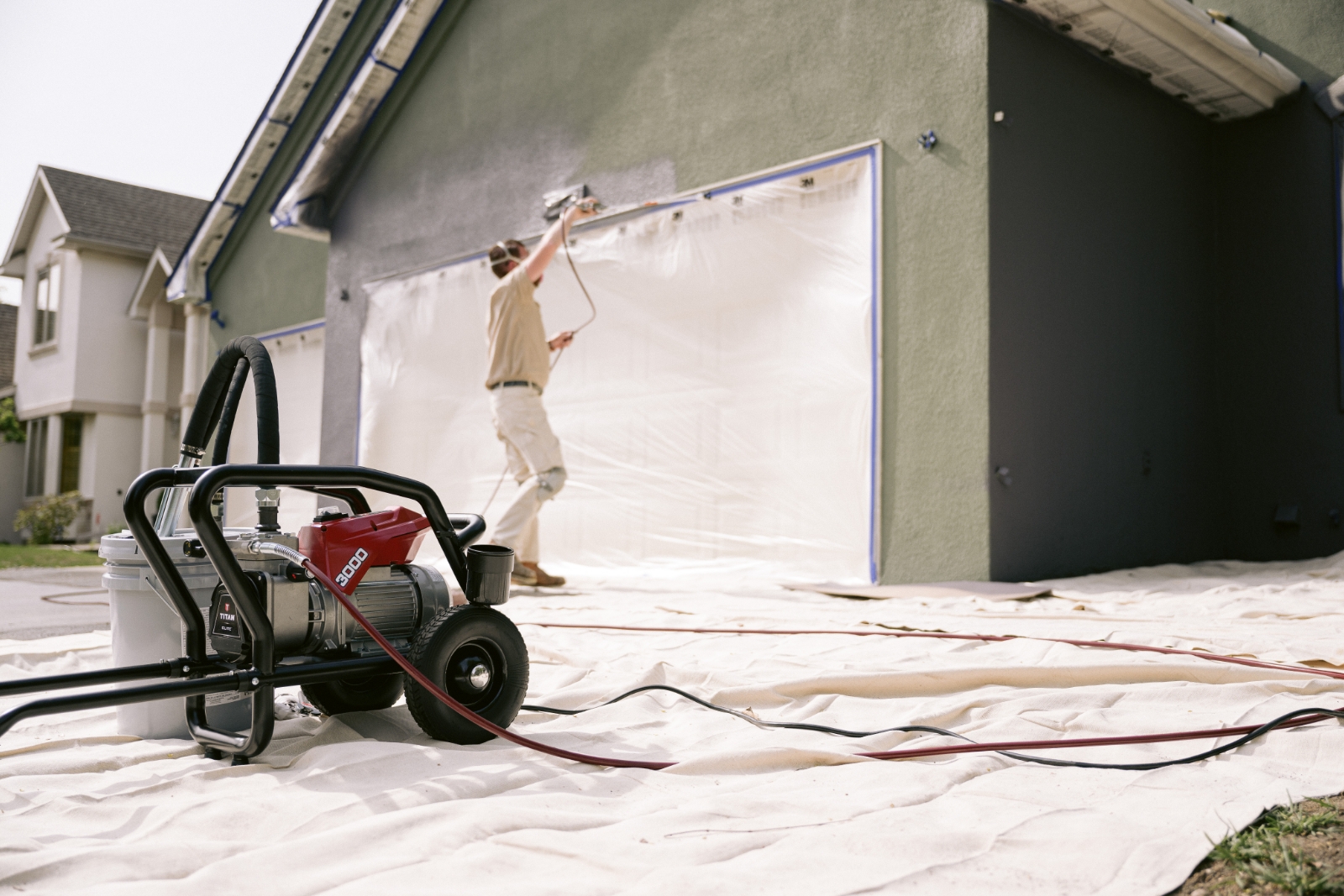
We’ve all heard the old adage “time is money,” but for painting pros, the saying rings especially true every day. Simply working faster can certainly yield higher profits, but working smarter is what can really take your business to the next level. This is where airless paint sprayers come in.
Any seasoned pro will tell you airless sprayers are a must-have for more uniform coverage – and they get the job done at least three to four times faster than traditional rollers. The result? Higher profits and happier clients.
The vast majority of paint contractors coat flat surfaces like interior and exterior walls and ceilings on homes, businesses, and municipalities. And they’re typically applying light to medium-weight coatings (like stains, lacquers, enamels, oils, and latex) or medium to heavy coatings (like primers, block filler, or elastomeric). If you fall into this category and haven’t invested in an airless paint sprayer yet, it’s time.
There are many options for professional-grade sprayers, which can make choosing the right one for you a somewhat overwhelming experience. To help narrow the playing field, we’re here to walk through four general guidelines for choosing the right airless paint sprayer for your business.
1. Size Matters
Before buying an airless paint sprayer, determine what size sprayer you need by estimating your weekly volume. Below are general guidelines for common latex paint. Thicker coatings have different requirements, so consult with your equipment supplier for the most accurate info.
|
Gallons Per Week – Latex |
Sprayer Size |
Gallons Per Minute (GPM) |
Tip Size |
|
1-10 |
Occasional-use sprayer (available in home centers) |
Under 1/3 GPM |
Capable of a .017” maximum tip size |
|
10-50 |
Entry-level contractor sprayer |
Under 1/2 GPM |
Capable of a .021” maximum tip size |
|
50-100 |
Mid-sized contractor sprayer |
Over 1/2 GPM |
Capable of greater than .023” tip size |
|
100+ |
Large contractor sprayer |
About 1 GPM |
Capable of greater than .031” tip size |
In addition to sprayer size, be sure you’re thinking about sprayer hose length, as well, as your hose will need to accommodate the preferred range between the unit and the spray gun. Remember: longer hoses require more pressure, and if you’re elevating hoses two or more stories, gravity also enters into the equation. Talk to your equipment supplier about your specific needs.
To leave room for future business growth, it’s also smart to invest in a sprayer that’s a step or two above your current volume requirements. While less expensive, an undersized sprayer will cost you more in frustration, repairs, and downtime over time, so it’s best to get ahead of those headaches while you can.
2. The Right Spray Tips
When using airless paint sprayers, it is always important to use the right spray tips.
Your spray tip controls two things:
- The width of the spray pattern.
- The paint flow rate.
Spray tip sizes consist of three numbers, and it’s important to understand what they mean.
As an example, in a 517 tip, the first digit (5) is multiplied by two for the approximate fan width (10- to 12-inches).
The second two digits (17) are the size of the orifice in thousandths of an inch (.017), representing the flow rate, i.e., how many gallons per minute will pass through the tip.
Generally speaking, smaller tips are used for light to medium-weight coatings like latex, stains, and lacquers, while larger tips are used for heavier coatings like primers and block fillers. Reference the coating’s product data sheet or your paint supplier for further details.
3. Number of Spray Guns
If your projects are usually small- to medium-sized residential jobs, a sprayer with one gun will likely suffice. But if your business evolves to larger residential, commercial, or industrial jobs, you may want two or more crew members siphoning off a single coating can, and/or off the same machine. This requires multiple guns and larger sprayers. Whatever your situation, make sure the sprayer you buy accommodates the number of crew members and guns you need.
4. Power Sources
Airless paint sprayers are available in gas, electric, or pneumatic models, and some sprayers have the capability of being converted from electric to gas, giving you added flexibility on the job site. Before choosing a sprayer, consider the available power sources at the job sites you work and decide what’s right for you.
The bottom line is that paint sprayers significantly reduce the number of hours spent on each job, creating more time for additional jobs and higher profits. Or if you choose, more time off! Whatever your motivation, when you’re ready to work smarter, remember these guidelines for choosing a sprayer and discuss the options with your equipment supplier.
Spray Smarter with Titan Tool
Boost every job with the unbeatable power, speed, and control of a Titan airless paint sprayer, designed to get the job done right the first time. Built for maximum durability, Titan is the smart business choice for best-in-class ROI and dedicated support whenever you need it.
Browse our electric airless paint sprayers and gas airless paint sprayers, or contact us today to start experiencing better results, every time you pull the trigger.

